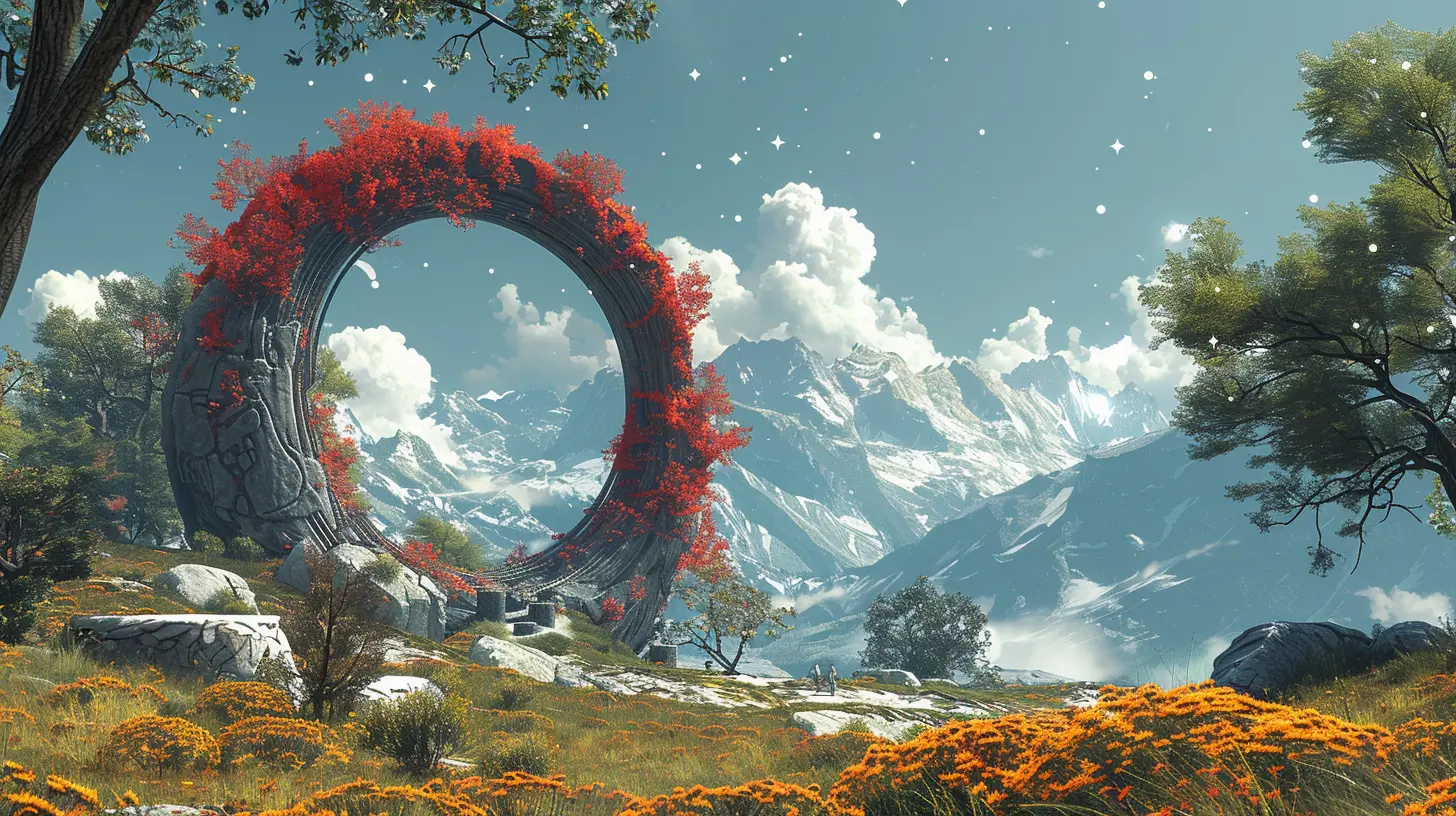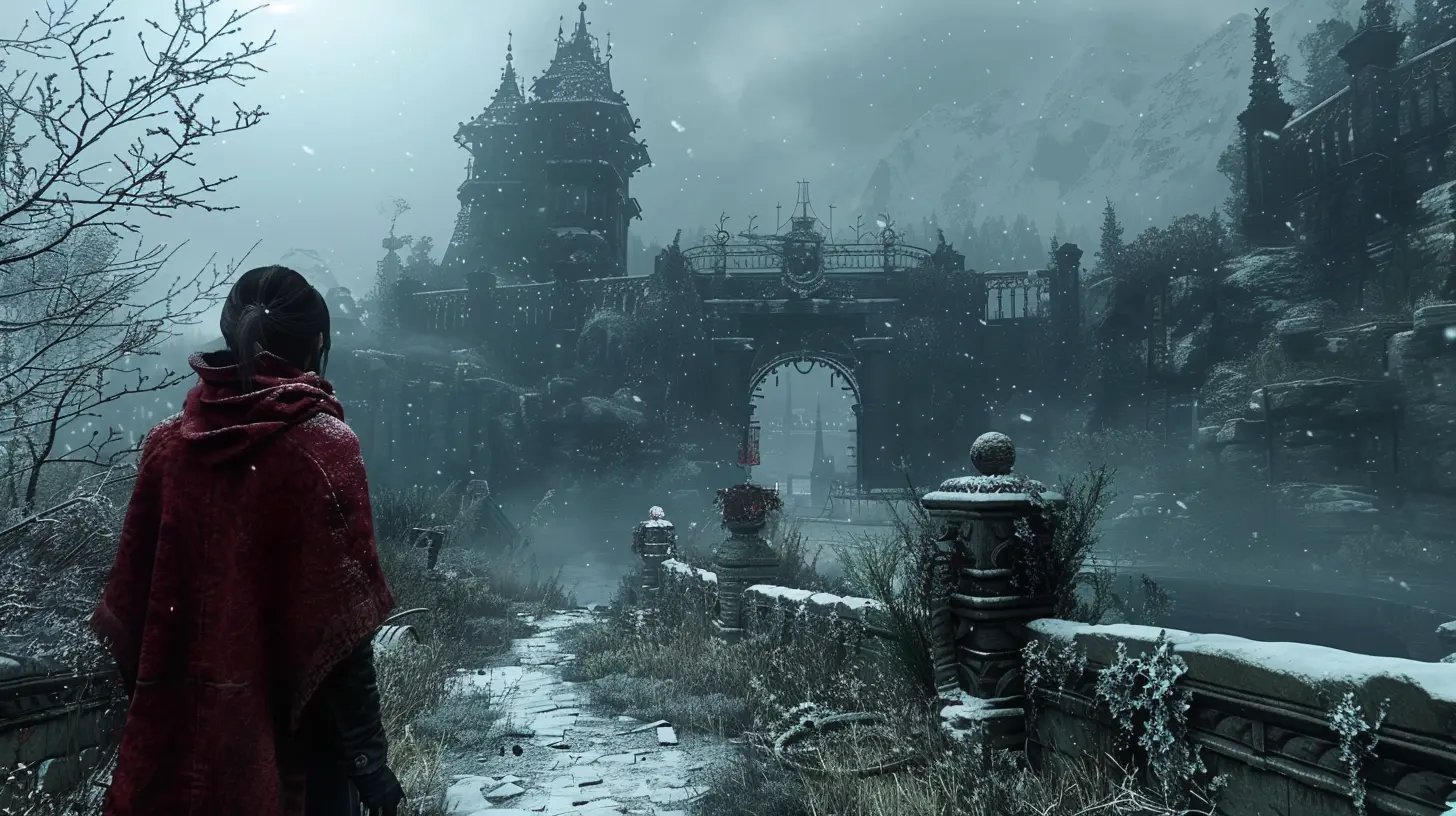How Games Challenge Traditional Story Arcs Through Interactivity
13 July 2025
Once upon a time, stories followed a script. A beginning, a middle, and an end—tied neatly together with a tidy bow. But not anymore. Enter the world of video games. Here, the player becomes the protagonist, the plot bends like light through a prism, and narrative rules crumble under the weight of interactivity.
Sounds poetic? It is. Because games don’t just tell stories—they let you live them. And that changes everything.

The Age-Old Story Arc: A Familiar Tune
Before we venture into digital realms and gamer-driven narratives, let’s revisit the good ol’ storytelling formula. We’re talking about the classic three-act structure:1. Setup – Meet the characters, feel the setting, discover the problem.
2. Confrontation – Conflict brews, stakes rise, tension boils over.
3. Resolution – The climax hits, loose ends tie up, lessons stick.
This formula isn’t a bad thing—it works. From Shakespeare’s plays to Hollywood blockbusters, it’s been a tried-and-true method for centuries. But it’s also a bit... rigid.

Interactivity: The Story Slayer and Savior
Now, toss a controller into the hands of the audience. Or better yet, hand them a keyboard and mouse. What happens?Suddenly, the story’s not on rails. The player veers left when the plot expected right. They may shoot where they should’ve spoken, or sneak, or run, or even refuse to play along. And that’s the chaos—and magic—of interactivity.
This is where traditional story arcs shatter like glass under a hammer. But in those fragments, new kinds of stories are born.

Games as Co-Writers: When the Player Shapes the Plot
In books and movies, you’re a passenger. In games, you co-pilot the narrative. That’s the big shift. And it makes all the difference.1. Branching Narratives – Choices Etch the Path
Think of games like Detroit: Become Human, The Witcher 3, or Life is Strange. These titles don’t hand you a single path—they drop you in a maze of decisions. Each choice molds the scene, for better or worse.One wrong word? Your favorite character dies. A clever move? You save an entire town. The story changes because you changed it.
There’s no single climax. No guaranteed ending. Just a kaleidoscope of outcomes based on what you did, not what the writer dictated.
2. Emergent Storytelling – Chaos Meets Creativity
Then there’s emergent gameplay—where the story isn’t written at all. It’s born on the fly. Games like Minecraft, RimWorld, or The Sims don’t feed you a plot. You make your own.Here, interactivity means freedom. Build a fortress. Create drama. Watch characters fall in love or spiral into madness—all without a guiding script. It’s storytelling through play, and it defies any structured arc.

The Death of the Hero’s Journey?
Joseph Campbell’s famous "Hero’s Journey" shaped countless films and novels. From Frodo to Luke Skywalker, the arc is familiar:- A call to adventure
- Trials and tribulations
- The final challenge
- The return home, changed
But in games, the hero’s journey often takes a detour—or dies completely.
Subverted Expectations in Player-Driven Games
Take Undertale. The game recognizes your actions. Be kind, and you walk a path of peace. Be cruel, and the world remembers. It shames you. It mourns. It reroutes the narrative.Or look at Spec Ops: The Line. What starts like a typical military shooter transforms into a psychological horror that confronts the player’s morality. The traditional arc? Torn to shreds.
The journey here doesn’t reassure. It questions, challenges, and flips convention on its head.
Interactive Storytelling as a Mirror
Games hold up a mirror. Not just to society, but to the player. Every choice you make reflects something. Your logic. Your values. Even your flaws.This isn’t passive engagement—this is intimacy. A page doesn’t judge you. A movie doesn’t react to you. But a game? Oh, it can make you weep over the path you chose.
Moral Ambiguity: No Right Answers
In Papers, Please, you play as an immigration officer. You stamp, approve, deny. Every decision carries weight. Will you separate families to protect your own? Will you break rules to do what’s right?There’s no clean resolution. No triumphant climax. Just messy, human choices that echo long after the credits.
Games That Break the Fourth Wall
Some games go further—they wave at you from inside the screen.Doki Doki Literature Club starts as a sweet visual novel and descends into meta-horror chaos. It rewrites its own code. Deletes characters. Talks to you. That’s a level of narrative interaction that simply doesn’t exist in books or films.
It’s storytelling that knows it’s storytelling—and ropes you into the madness.
Breaking the Script: Sandbox Games and Narrative Freedom
Open-world and sandbox games take a sledgehammer to structured storytelling. Think Grand Theft Auto V, Red Dead Redemption 2, Elden Ring. Sure, there’s a main plot, but you could ignore it for hours—maybe forever.Ride into the wilderness. Hunt bandits. Rescue strangers. Or just admire the sunset. The story isn’t just what happens—it’s what you do.
The Player as Storyteller
When you share a gaming moment—like barely surviving a dragon attack in Skyrim—you’re not reciting the developers’ script. You’re telling your story.It’s like improv theater mixed with a choose-your-own-adventure book on steroids. No two journeys are the same. And that unpredictability destroys the idea of a single, orchestrated arc.
Games and Emotional Engagement
It’s easy to think interactivity ruins storytelling. After all, if anything can happen, how can you build suspense? How can pacing work? Can emotion land when there’s no guarantee the player even sees the big plot twist?Turns out, yes. And often more intensely than passive media.
Emotional Weight of Personal Stakes
In The Last of Us, you don’t just watch Joel and Ellie’s bond grow—you protect them. You shoot, sneak, survive for them. So when tragedy strikes, it doesn’t feel like just part of the plot. It feels personal.And in games like Firewatch or Journey, the subtle storytelling and player agency combine to stir emotions movies only dream of.
Interactivity Isn’t the Enemy of Story—It’s the Evolution
Let’s be real—it’s not that games destroyed the traditional story arc. They evolved it. They cracked it open, stretched its limbs, and breathed new life into stale formulas.Yes, stories in games can still have structure. God of War (2018), for example, balances a tight, emotional narrative with player agency beautifully. But even there, interactivity enhances the arc—it doesn’t restrain it.
The player’s presence rewrites the rules. And that’s the point.
The Future: Where Stories Go From Here
As technology evolves, so will narratives. AI might soon offer responsive storytelling that adapts in real-time. Imagine a game that rewrites dialogue based on your tone of voice—or a plot that shifts as it learns your personality.VR and AR will blur the line between player and protagonist even further. We won’t just interact with stories. We'll meld with them.
And in this brave new world, the traditional story arc? It might be just one option in a sea of narrative possibility.
Final Thoughts
So, how do games challenge traditional story arcs through interactivity?They don’t just challenge—they revolutionize. They make space for choice, chaos, and creation. They invite you in, hand you the pen, and say, “Write your story.” And that invitation rewrites the very fabric of storytelling itself.
We no longer watch the hero's journey. We become it, twist it, tear it down—and sometimes rebuild it anew. And in that beautiful, unpredictable dance between player and code, a new kind of narrative is born. One that beats with a human heart and digital soul.
all images in this post were generated using AI tools
Category:
Interactive StorytellingAuthor:

Stephanie Abbott
Discussion
rate this article
2 comments
Blaze Gomez
Games redefine storytelling by immersively engaging players in dynamic narratives. Unlike traditional arcs, interactivity allows for personal agency, creating unique experiences that resonate deeply. This evolution not only captivates but also elevates the art of storytelling in modern media.
November 9, 2025 at 6:03 PM

Stephanie Abbott
Thank you for your insightful comment! I completely agree that interactivity in games creates unique narrative experiences that revolutionize storytelling in modern media.
Tempest Barron
This article beautifully highlights the transformative power of interactivity in gaming. It’s fascinating how players can shape narratives in ways that resonate on a personal level. Thank you for exploring this dynamic shift; it truly deepens our connection to storytelling in digital spaces.
July 21, 2025 at 5:07 AM

Stephanie Abbott
Thank you for your thoughtful comment! I'm glad you found the exploration of interactivity and its impact on storytelling meaningful. It truly is a game-changer!


